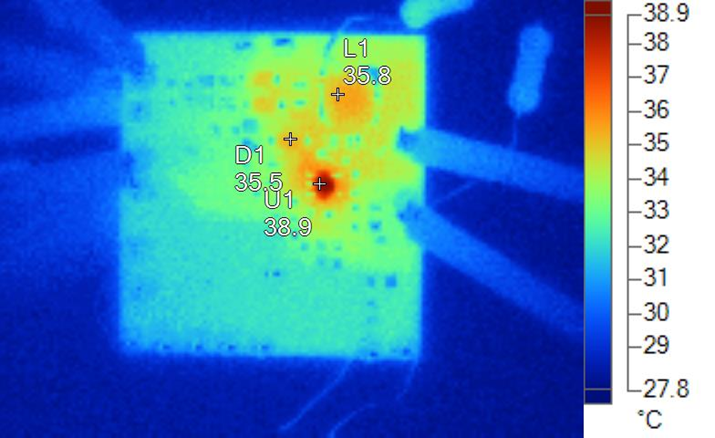TIDT350 October 2023
- 1
- Description
- Features
- Applications
- 1Test Prerequisites
- 2Testing and Results
- 3Waveforms
2.2 Thermal Images
The thermal image is shown in the following figure.
 Figure 2-13 Thermal Image 50-mA Output Current on
Each Output
Figure 2-13 Thermal Image 50-mA Output Current on
Each OutputTable 2-1 Summery of the Thermal Image
| Name | Temperature |
|---|---|
| D1 | 35.5°C |
| L1 | 35.8°C |
| U1 | 38.9°C |